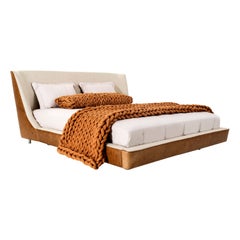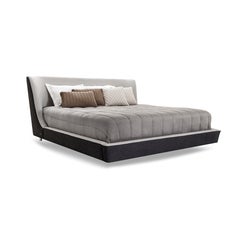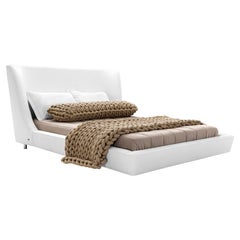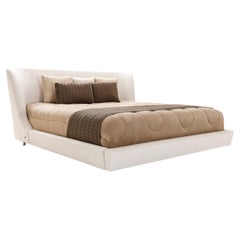Musa Bed
2010s Brazilian Modern Beds and Bed Frames
Leather, Fabric, Wood
2010s Brazilian Modern Beds and Bed Frames
Fabric, Upholstery
2010s Brazilian Modern Beds and Bed Frames
Fabric, Upholstery
2010s Brazilian Modern Beds and Bed Frames
Fabric, Wood
Recent Sales
2010s Brazilian Modern Beds and Bed Frames
Leather, Upholstery, Fabric, Wood
People Also Browsed
21st Century and Contemporary Italian Art Deco Beds and Bed Frames
Chrome
21st Century and Contemporary Mexican Organic Modern Table Lamps
Bronze, Brass
21st Century and Contemporary Philippine Art Deco Commodes and Chests of...
Brass
Mid-20th Century Swedish Brutalist Beds and Bed Frames
Pine
21st Century and Contemporary Portuguese Beds and Bed Frames
Cotton, Wood
2010s Canadian Modern Chandeliers and Pendants
Brass
21st Century and Contemporary Japanese Mid-Century Modern Table Lamps
Metal
21st Century and Contemporary Brazilian Modern Armchairs
Bouclé
21st Century and Contemporary American Mid-Century Modern Wall Lights an...
Enamel, Bronze
21st Century and Contemporary British Organic Modern Wall Lights and Sco...
Plaster
21st Century and Contemporary British Organic Modern Wall Lights and Sco...
Plaster
2010s Italian Minimalist Figurative Sculptures
Murano Glass
21st Century and Contemporary European Neoclassical Benches
Iron
21st Century and Contemporary French Brutalist Night Stands
Oak
21st Century and Contemporary Polish Organic Modern Floor Mirrors and Fu...
Wood
Antique 19th Century Bergere Chairs
Fabric, Wood, Paint
A Close Look at Modern Furniture
The late 19th and early 20th centuries saw sweeping social change and major scientific advances — both of which contributed to a new aesthetic: modernism. Rejecting the rigidity of Victorian artistic conventions, modernists sought a new means of expression. References to the natural world and ornate classical embellishments gave way to the sleek simplicity of the Machine Age. Architect Philip Johnson characterized the hallmarks of modernism as “machine-like simplicity, smoothness or surface [and] avoidance of ornament.”
Early practitioners of modernist design include the De Stijl (“The Style”) group, founded in the Netherlands in 1917, and the Bauhaus School, founded two years later in Germany.
Followers of both groups produced sleek, spare designs — many of which became icons of daily life in the 20th century. The modernists rejected both natural and historical references and relied primarily on industrial materials such as metal, glass, plywood, and, later, plastics. While Bauhaus principals Marcel Breuer and Ludwig Mies van der Rohe created furniture from mass-produced, chrome-plated steel, American visionaries like Charles and Ray Eames worked in materials as novel as molded plywood and fiberglass. Today, Breuer’s Wassily chair, Mies van der Rohe’s Barcelona chair — crafted with his romantic partner, designer Lilly Reich — and the Eames lounge chair are emblems of progressive design and vintage originals are prized cornerstones of collections.
It’s difficult to overstate the influence that modernism continues to wield over designers and architects — and equally difficult to overstate how revolutionary it was when it first appeared a century ago. But because modernist furniture designs are so simple, they can blend in seamlessly with just about any type of décor. Don’t overlook them.
Finding the Right Beds-frames for You
We find relaxation and solace in our bedrooms, which are often the most cherished rooms of a home. Your antique, new or vintage bed and bed frame are integral to this oasis of personal comfort.
Beds and bed frames have long been an important part of the sanctuary that is the bedroom. For the upper class in countries such as England, the massive, costly beds of the 16th and 17th centuries were decorative and of the poster variety. Some were characterized by large painted wooden headboards, often made of oak, that featured ornate carvings and richly colored curtains affixed to each of the two or four posts — think of today’s sumptuous upholstered headboards as a distant cousin to these luxurious furnishings. The heavy fabric curtains were drawn across a fringed canopy to close out the sunlight that might’ve warmed your grandiose and opulent bedchambers. This feature could also offer privacy as desired, because, as we all know, a bedroom is for more than just sleeping.
Coiled springs didn’t make their way into mattresses until the 1800s, which likely made for a far more comfortable night’s sleep for many. Bed frames of cast iron and brass were introduced during the mid- to late-19th century. Later, the 20th century brought with it marvelous innovations for slumberland, among them daybeds from the likes of George Nelson and Ludwig Mies van der Rohe and Lilly Reich as well as convertible sofa beds.
Today, you will find a range of beds geared toward your individual personality and preferred style of decor. When shopping for a bed and bed frame, keep in mind that you’ve got options. Sizes range from twin to California king. At 76 inches wide and 80 inches long, a king-size bed is roughly 16 inches wider than a queen-size mattress, and your bed frame will likely add two to five inches to each side. (The California king bed is 84 inches long.)
From dramatic bedroom designs to uncomplicated, minimalist approaches, the bedroom has evolved into the haven that it should be: a peaceful place of respite, where we begin and end every day. Take the time to create your very own oasis — you deserve it. Rest easy with an expansive collection of antique, new and vintage beds and bed frames available on 1stDibs.




